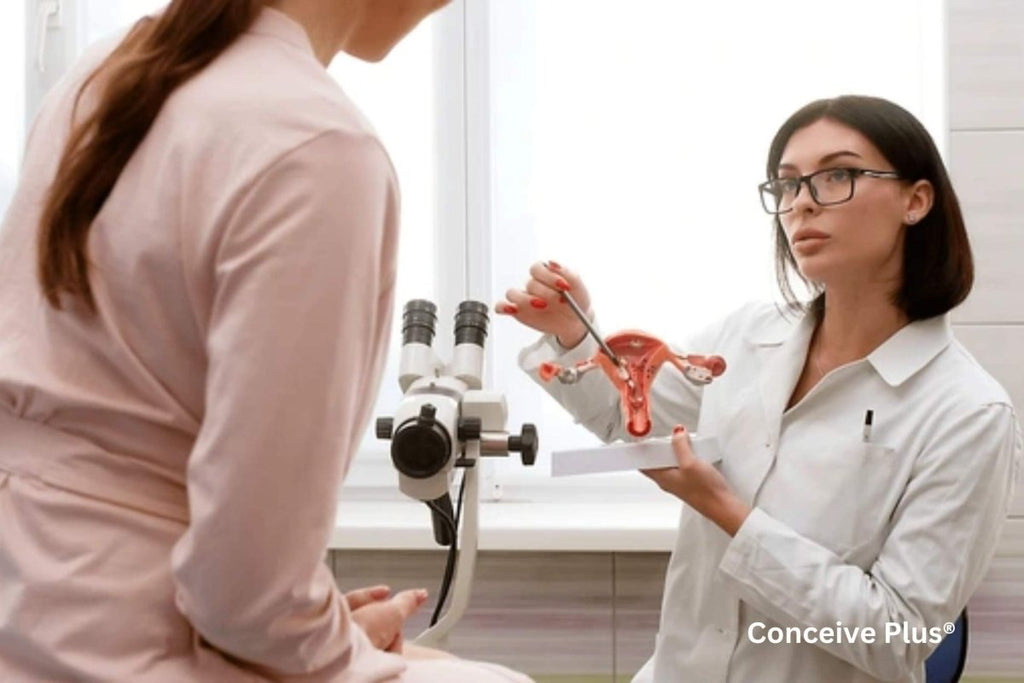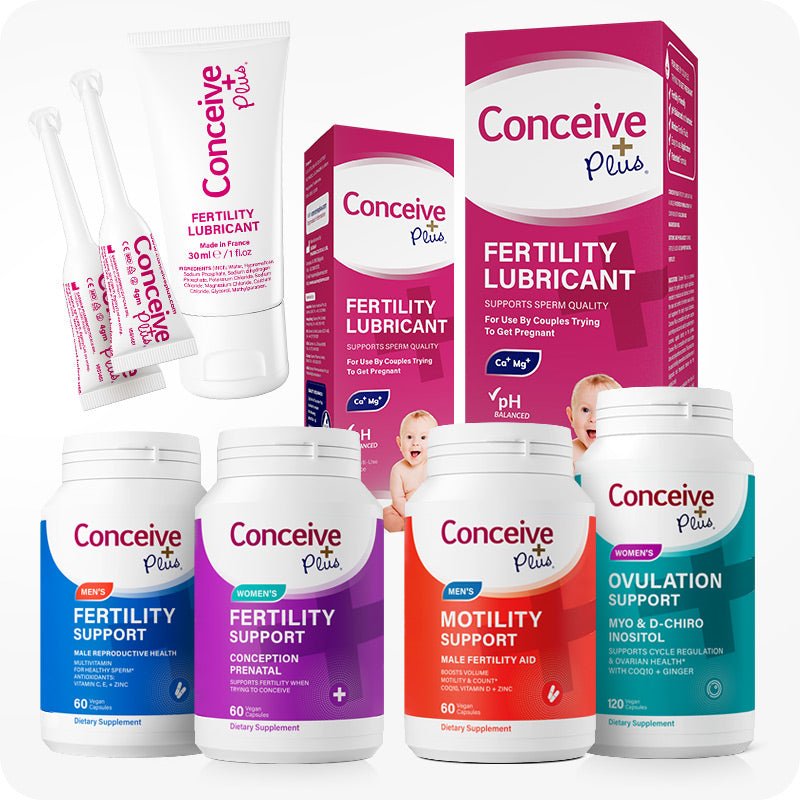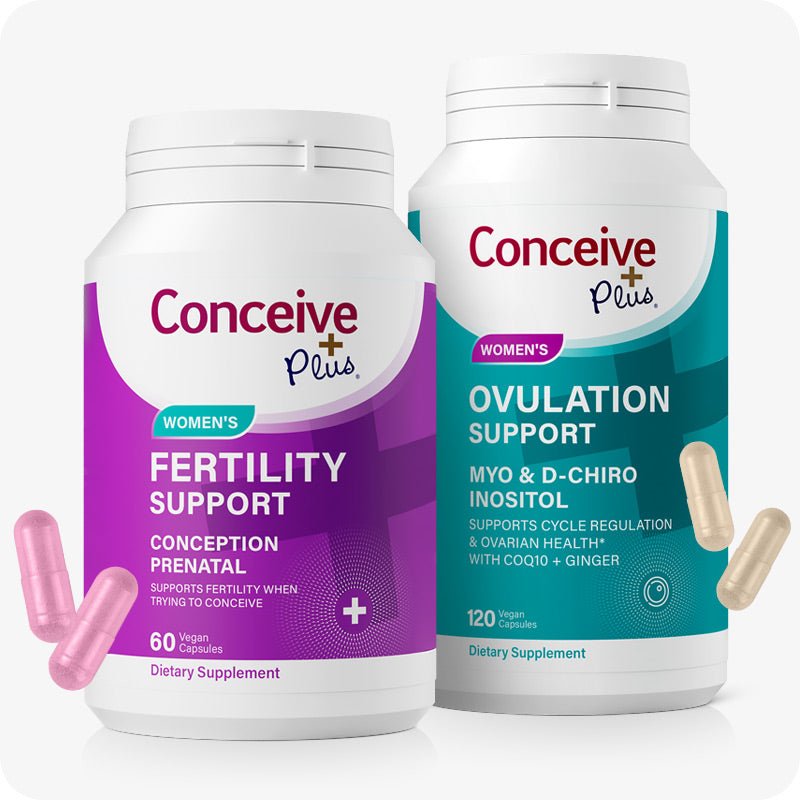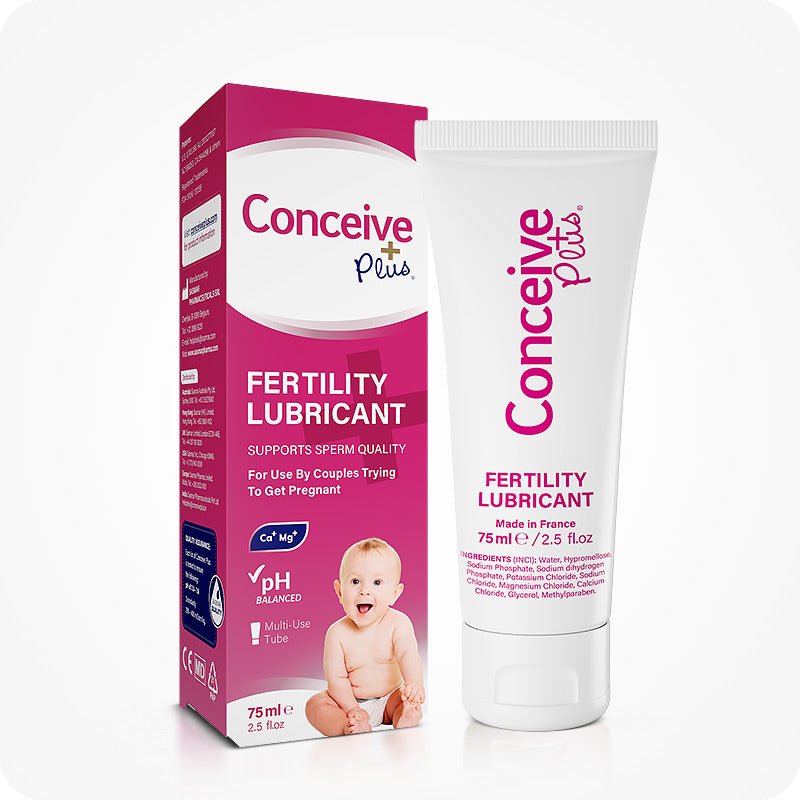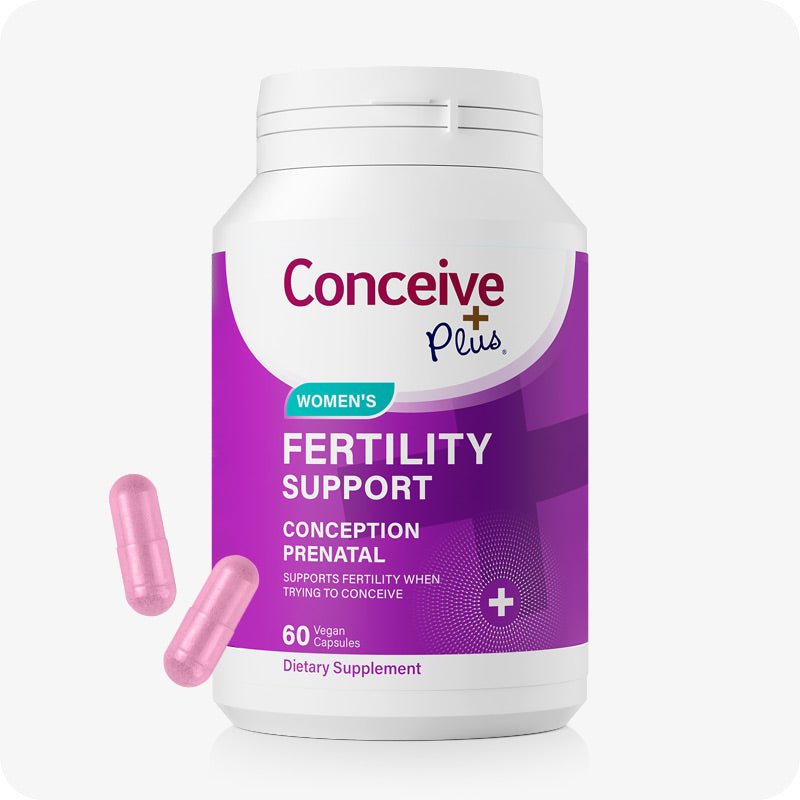What Are the Reproductive Problems in Females?
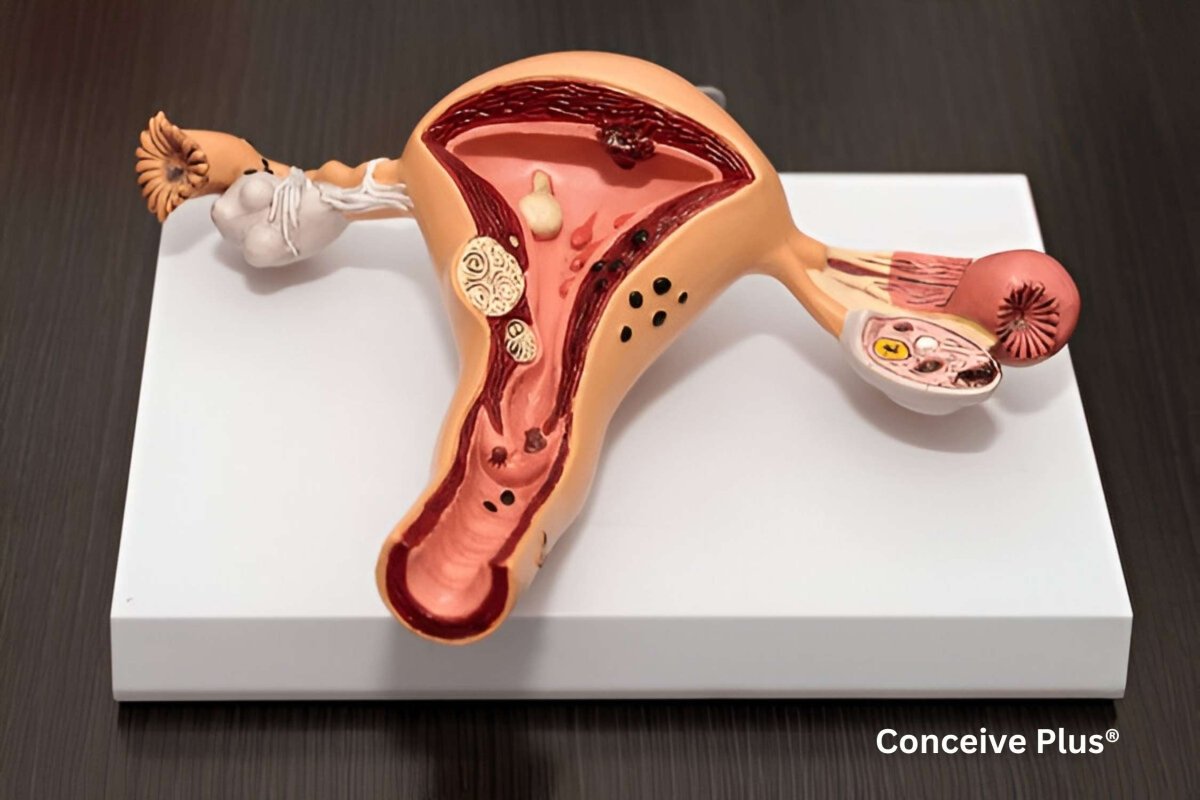
Reproductive problems in females refer to irregular periods, trouble getting pregnant, or hormone imbalances. These problems are quite common among women around the world.
Reproductive issues in females can happen at any age and can seriously affect their overall health. Poor reproductive health can cause physical discomfort, and emotional stress, and even impact mental well-being.
Still, female reproductive issues are often overlooked or misunderstood.
In this article, we will discuss some common reproductive problems in females. The article also includes tips to improve female reproductive health.
Reproductive Health in Females
Reproductive health in females covers more than just the ability to reproduce. It also includes sexual health, hormone balance, and menstrual health. All of these aspects are important for a woman's overall well-being.
The reproductive health of a woman impacts her physical, mental, and social health. Problems with reproductive health can lead to serious issues like hormone imbalances, infertility, and conditions such as PCOS.
Anatomy of the Female Reproductive System
The female reproductive system contains different structures that work together for reproduction. In addition to reproduction, these organs play a key role in maintaining overall health in females.

Here are the organs in the female reproductive system:
Ovaries
Ovaries produce eggs for reproduction. They are present on either side of the uterus. In addition to eggs, ovaries are responsible for hormone production such as estrogen and progesterone [1]. These hormones are responsible for the menstrual cycle and they also support pregnancy.
Fallopian Tubes
Fallopian tubes are the sites where sperm fertilizes the egg. They are located on either side of the uterus and extend from the ovaries.
Ovaries transfer eggs to the fallopian tubes for fertilization. If the fertilization occurs, fallopian tubes transfer the embryo to the uterus for implantation.
Uterus
The uterus is located in the lower abdomen, between the bladder and the rectum. The uterus receives a fertilized egg from the fallopian tubes and nourishes it until the child's birth. The fetus stays in the uterus for approximately nine months.
Vagina
The vagina, also called the birth canal, is located between the uterus and the external body. It serves as a passage for menstrual flow, sexual intercourse, and childbirth. Vagina also protects internal reproductive organs.
Understanding the model of male reproductive system is also important because it helps in recognizing how male fertility contributes to successful conception and overall reproductive health.
Common Reproductive Problems in Females
Reproductive problems in females are more common than they think of it. Reproductive issues in females can occur at any age, from puberty to menopause — the end of menstrual cycles.
Some female reproductive problems are mild and recover on their own. In contrast, other female problems are severe and they can affect women’s quality of life and their ability to conceive.
Some common reproductive problems in females include:
-
Hormonal Imbalance
Hormonal imbalance refers to abnormal fluctuations in estrogen and progesterone levels. It is a very common reproductive problem in many women.
Hormonal imbalance can cause many problems such as irregular periods, heavy bleeding, and mood swings. It can lead to more severe complications when a woman is pregnant. Hormonal imbalance during pregnancy increases the risk of miscarriages [2].
Once in a while delays in periods can be normal. However, repeated irregularity in periods indicates hormonal problems and you must consult your doctor about it.
-
Polycystic Ovary Syndrome (PCOS)
Polycystic ovary syndrome or PCOS is the most common cause of infertility in women. It is a condition that develops from hormonal changes in the female body and it affects ovaries.
PCOS symptoms include irregular periods, hair growth, and the development of small cysts on the ovaries. This condition also makes it hard for women to get pregnant.
World Health Organization reports that between 8 to 13% of women develop PCOS in their reproductive life [3]. Studies also show that 70 to 80% of women with PCOS are infertile [4].
-
Endometriosis
Endometriosis is a condition in which tissues similar to the uterus develop in the other part of the reproductive system. These abnormal tissues commonly develop in the fallopian tubes and ovaries.
The abnormal growth of uterine tissues can cause severe pain and irregular periods. It is also a risk factor for fertility problems and can give birth to other medical conditions. According to WHO, this condition affects 10% of adult females in their reproductive life [5].
-
Fibroids
Fibroids are the growth of abnormal mass of cells in the uterine. They are mostly noncancerous and cause pain and vaginal bleeding. Some women with fibroids may not even experience any symptoms.
Studies show that about 70% of women develop uterine fibroids at some point in their life [6]. Fibroids can also cause infertility by blocking the fallopian tube or stopping the implant of the embryo into the uterus.
-
Infertility
Infertility in females is defined as the inability to get pregnant after trying for a year without any birth control. Infertility is a result of different problems related to the female reproductive system. The female diseases mentioned above such as PCOS and endometriosis are among some of the causes of female infertility.
A female can be infertile due to hormonal imbalances, blocked fallopian tubes, or issues with ovulation. Treatment for female infertility depends on the underlying cause.
Tips to Improve Female Reproductive Health
If you have some reproductive problem, you must consult a specialist for detailed examination and expert advice about your condition. In addition to medical management, you can follow these tips to improve reproductive health:
- Maintain a balanced diet rich in fruits, vegetables, and whole grains. A balanced diet provides you with essential nutrients for reproductive health. Using Conceive Plus Women’s Fertility Support, formulated with folate, zinc, and myo-inositol, can help regulate hormonal balance and support ovulation, improving overall reproductive health.
- Exercise regularly as it helps in weight management, reduces stress, and improves health problems.
- Get regular check-ups with a healthcare provider for early detection of potential reproductive problems.
- Practice good hygiene and safe sex to prevent sexually transmitted infections.
- Avoid smoking and limit alcohol consumption as they can contribute to reproductive problems and other health issues.
- Drink plenty of water and get enough sleep.
- Track menstrual cycles and consult with your doctor if you experience any changes or irregularities.
Key Takeaways on Female Reproductive Health
Female reproductive health is very important for successful conception. Common issues like hormonal imbalances, PCOS, and endometriosis can significantly impact a woman’s health and overall well-being.
Early diagnosis of these issues can significantly increase the chances of pregnancy and reduce the risk of complications. Regular check-ups, a healthy diet and lifestyle, and stress management play a key role in improving female reproductive health.
Resources Used
- Xu, X., Huang, Z., Yu, K., Li, J., Fu, X., & Deng, S. (2022). Estrogen Biosynthesis and Signal Transduction in Ovarian Disease. Frontiers in Endocrinology, 13, 827032. https://doi.org/10.3389/fendo.2022.827032
- Agarwal, N., & Kulshrestha, V. (2017). Hormones in Recurrent Pregnancy Loss. In Springer eBooks (pp. 79–88). https://doi.org/10.1007/978-981-10-7338-0_6
- Polycystic ovary syndrome. (2023, June 28). https://www.who.int/news-room/fact-sheets/detail/polycystic-ovary-syndrome#:~:text=Key%20facts,a%20leading%20cause%20of%20infertility.
- Melo, A. S., Ferriani, R. A., & Navarro, P. A. (2015). Treatment of infertility in women with polycystic ovary syndrome: Approach to clinical practice. Clinics, 70(11), 765-769. https://doi.org/10.6061/clinics/2015(11)09
- Endometriosis. (2023, March 24). https://www.who.int/news-room/fact-sheets/detail/endometriosis
- Yang, Q., Ciebiera, M., Bariani, M. V., Ali, M., Elkafas, H., Boyer, T. G., & Al-Hendy, A. (2022). Comprehensive Review of Uterine Fibroids: Developmental Origin, Pathogenesis, and Treatment. Endocrine Reviews, 43(4), 678-719. https://doi.org/10.1210/endrev/bnab039





